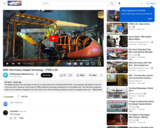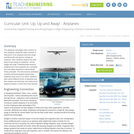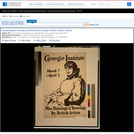
Learn about Air Traffic Controllers.
- Subject:
- Career and Technical Education
- Material Type:
- Activity/Lab
- Author:
- National Air and Space Museum
- Date Added:
- 09/05/2019

Learn about Air Traffic Controllers.

Because of the events of WWI, airplane technology developed rapidly. Learn how airplanes changed in this short time, how other technology advanced, and how airplanes were used throughout WWI.

This course is a graduate reading seminar, in which historical and contemporary studies are used to explore the interaction of technology with social and political values. Emphasis is on how technological devices, structures, and systems influence the organization of society and the behavior of its members. Examples are drawn from the technologies of war, transportation, communication, production, and reproduction.

Do you know how important GIS is to the transportation industry? The spatial applications to this field are so extensive that they represent an entire sub-discipline within the GIS community. In this course, we'll learn about the primary modes of transportation and explore some of the spatial applications developed to meet the unique needs of each. We'll also take a close look at some key organizations in the industry and learn firsthand from more than a dozen transportation professionals about the role GIS plays for them. Throughout the course, we'll study GIS concepts and techniques that are fundamental to transportation and get hands-on experience with tools such as Esri's Network Analyst and Esri's Roads and Highways.

The airplanes unit begins with a lesson on how airplanes create lift, which involves a discussion of air pressure and how wings use Bernoulli's principle to change air pressure. Next, students explore the other three forces acting on airplanes thrust, weight and drag. Following these lessons, students learn how airplanes are controlled and use paper airplanes to demonstrate these principles. The final lessons addresses societal and technological impacts that airplanes have had on our world. Students learn about different kinds of airplanes and then design and build their own balsa wood airplanes based on what they have learned.

Poster for an art exhibit showing an aviator with goggles pushed up on his head.
![[War Paintings & Drawings by British Artists] [Carnegie Institute, March 7 April 3].](https://img.oercommons.org/160x134/oercommons/media/upload/materials/screenshots/materials-course-92806.png)
Printer's proof without text, of poster for an art exhibit showing an aviator with goggles pushed up on his head. Accompanied by label: Linoleum Block Poster - 1916. Used by Carnegie Institute Fine Arts Department for display on local trolley cars. The impression carrying lettering was printed over the rendering of the aviator - no complete copy has been preserved. For this early use of this technique the blocks were cut by Harry L. Gage and printed on a cylinder press by his students in the Department of Printing, Carnegie Institute of Technology, Pittsburgh, Penna.

Learn about careers in the aviation industry, how you can get involved and the skills the aviation industry is looking for in future engineers, pilots, and technicians.